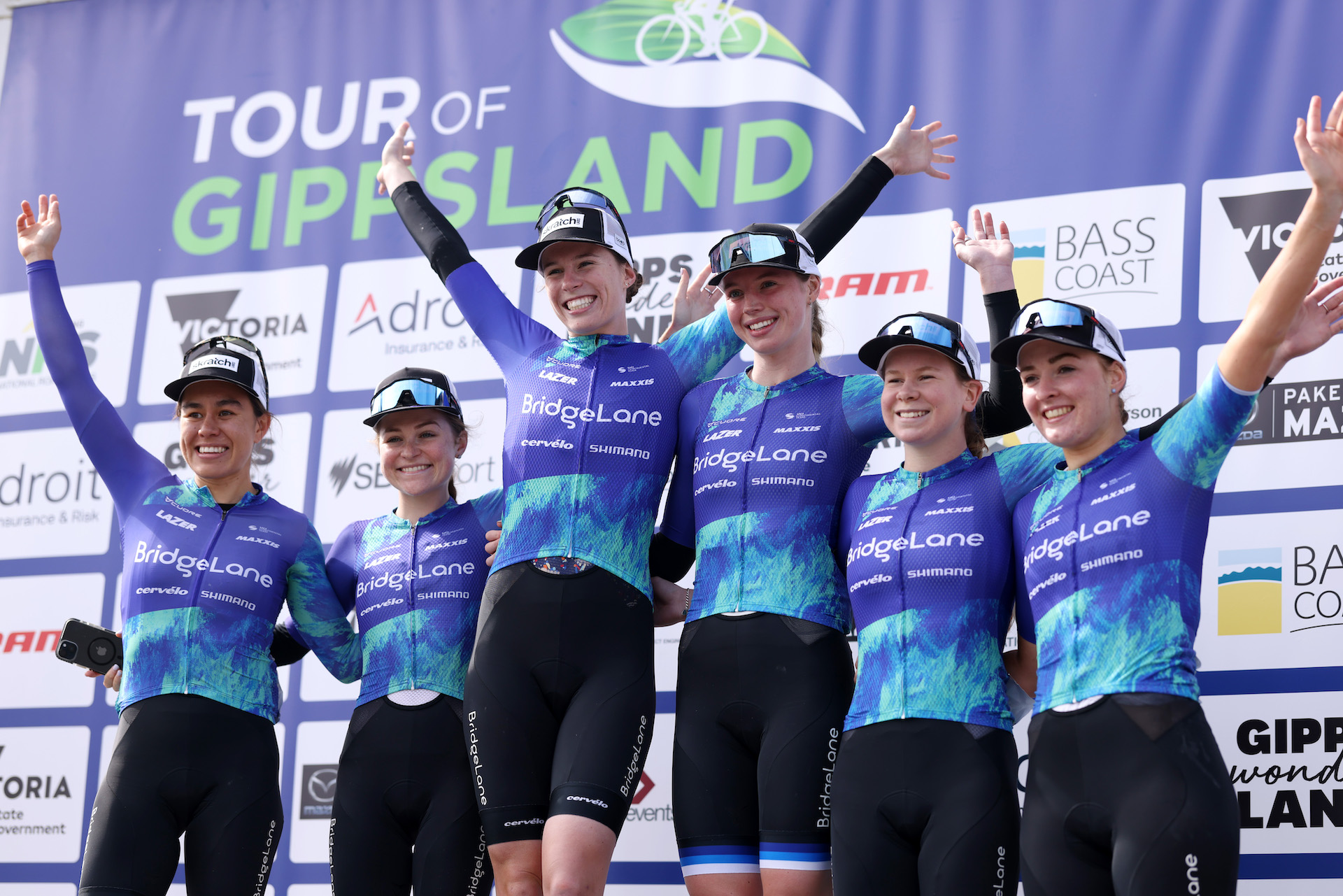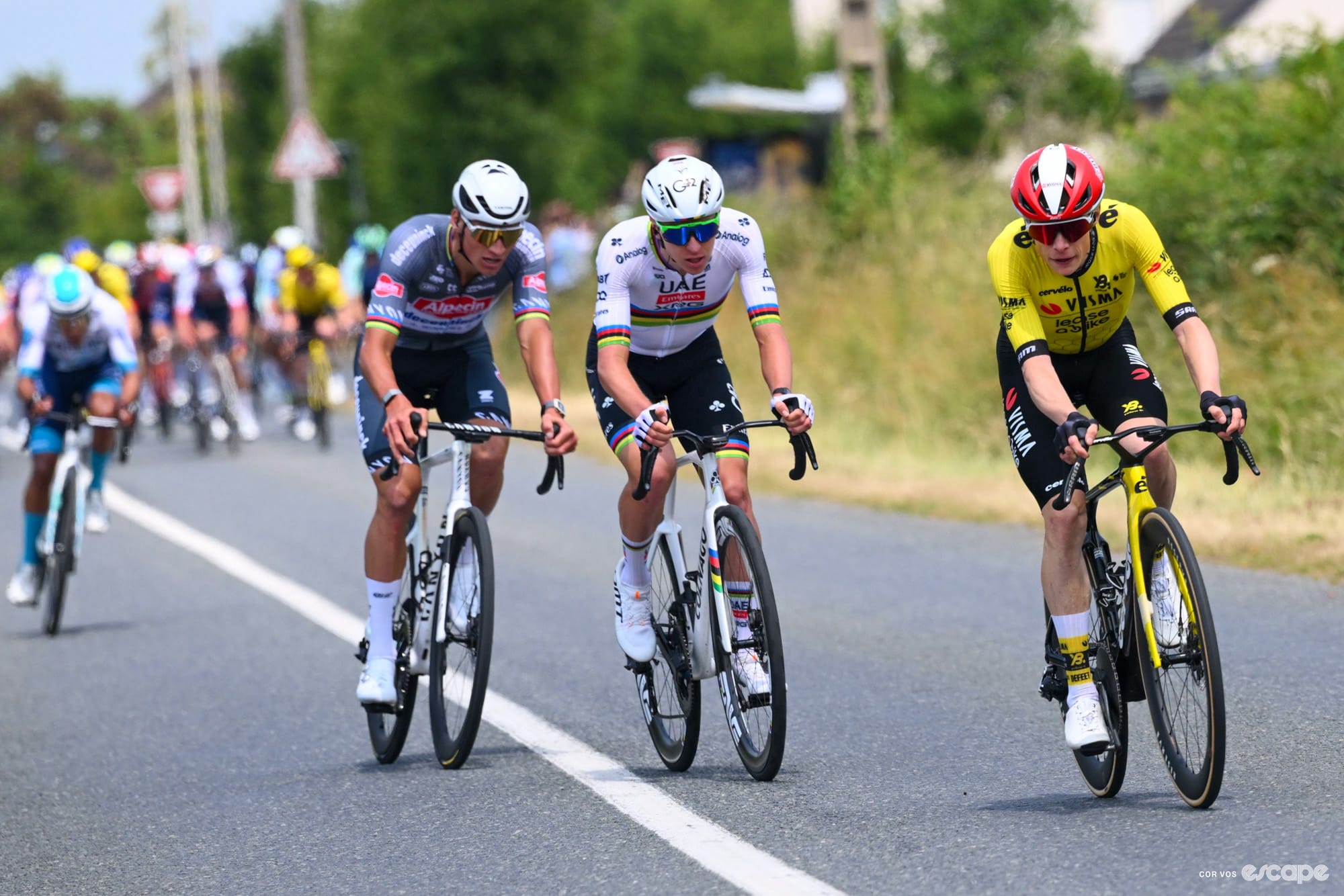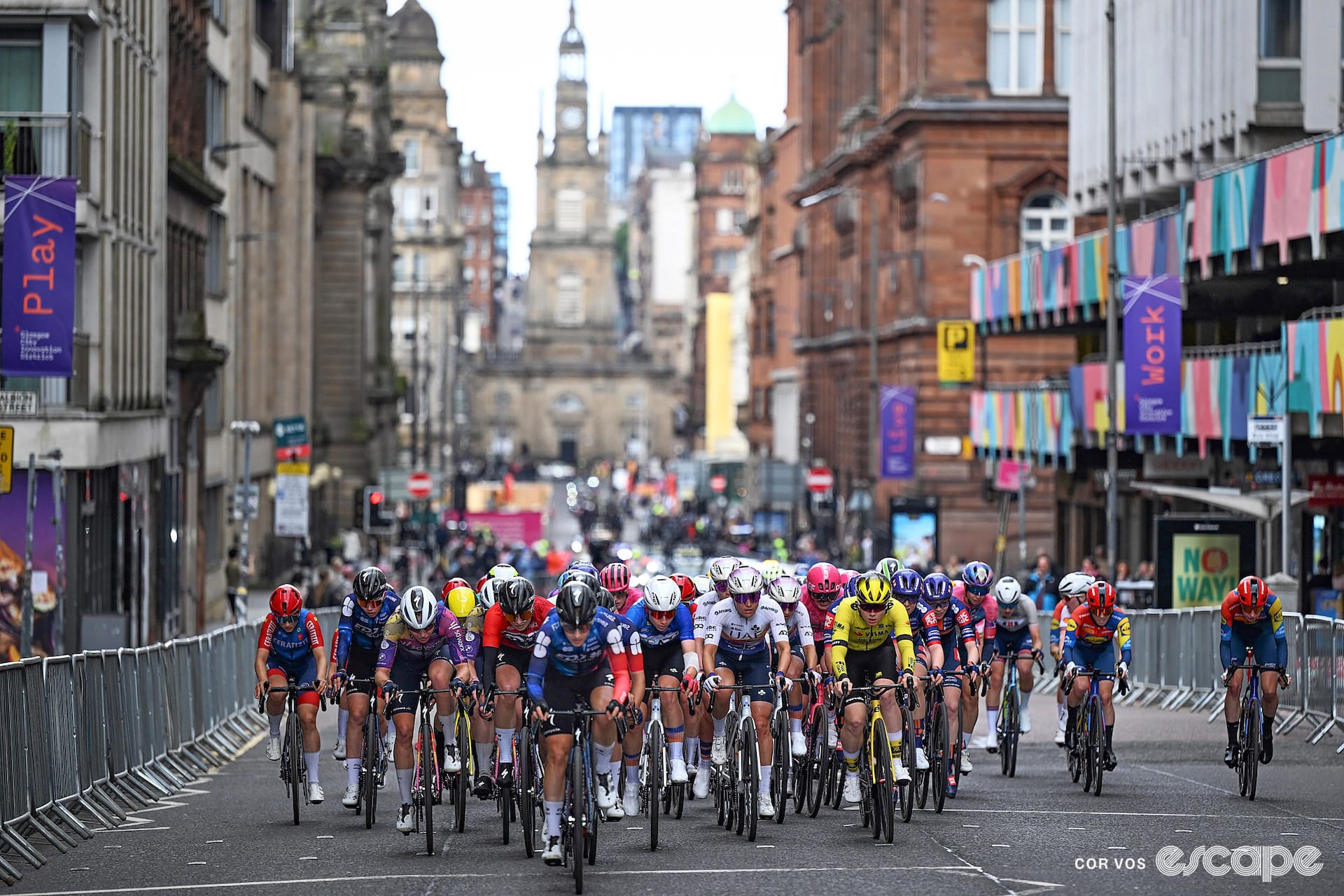AusCycling’s National Road Series (NRS) is the highest level of road racing in Australia. It’s long been a proving ground for the country's best up-and-coming riders; a place where those riders can show that they’re capable of making the big step up to the pro ranks.
With the 2023 NRS now complete, let’s take a look back at the series that was, which riders stood out the most, and what we can learn as we move towards a new year.
What did the 2023 NRS look like?
The 2023 NRS was raced over just six rounds, with three one-day races and three stage races. All six races included a men’s and women’s event:
- Melbourne to Warrnambool Classic (one-day)
- Tour de Brisbane (one-day)
- Grafton to Inverell (one-day)
- Tour of Gippsland (four stages)
- Cycle Sunshine Coast (five stages)
- Tour of Tasmania (five stages for men, three for women)
Two more races were originally part of the 2023 calendar but were later cancelled: the Tour of the Tropics and the Battle on the Border.
Who were the top performers in the 2023 NRS?
Here are some of the riders that impressed most throughout the series:
Men’s NRS
Tristan Saunders (BridgeLane) – The 23-year-old rouleur took a comfortable win in the individual overall standings after a bunch of wins: a three-minute solo victory in the legendary Melbourne to Warrnambool, two stage wins and the overall at the Tour of Gippsland, and a stage win at Cycle Sunshine Coast. Saunders was also third at the Tour de Brisbane.
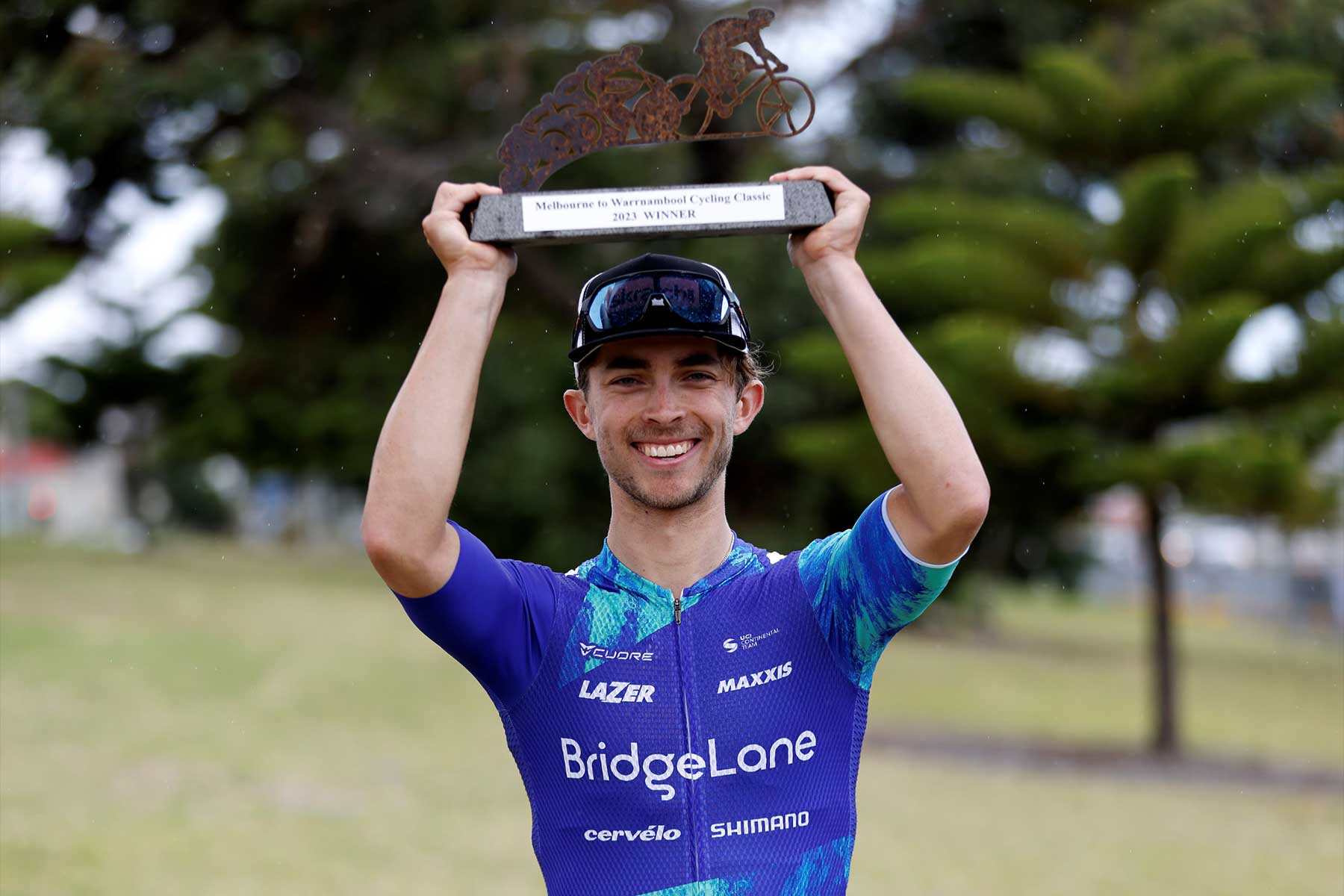
Declan Trezise (ARA-Skip Capital) – The 21-year-old all-rounder managed just one NRS win for the year – a stage win from the break at Cycle Sunshine Coast – but he managed five other podiums along the way. (He was also impressive on the Asian circuit, taking a couple of wins).
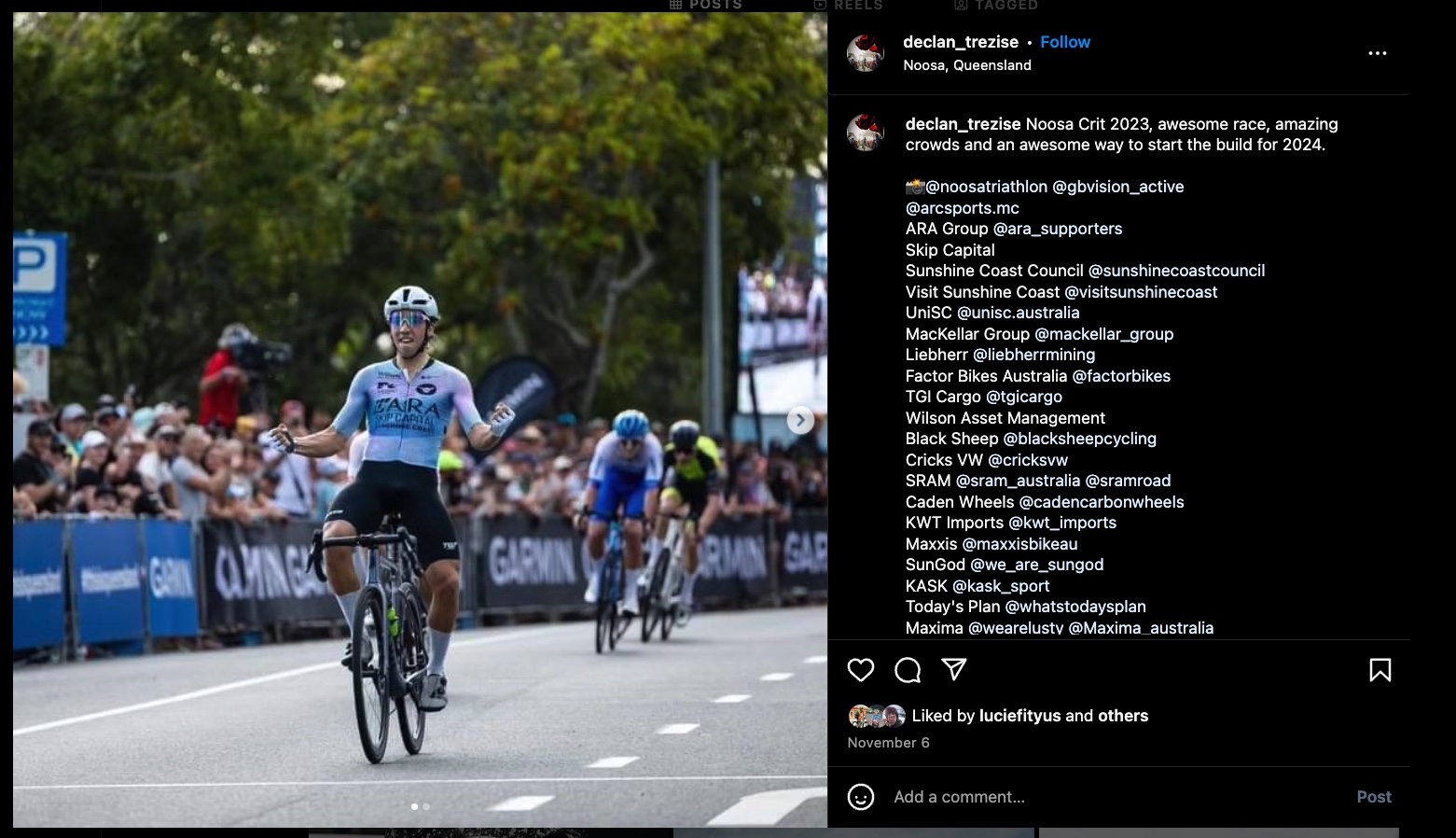
Matt Greenwood (BridgeLane) – Winner of the NRS’s young rider classification, 20-year-old Greenwood made his mark late in the series, at Cycle Sunshine Coast and then at the prestigious Tour of Tasmania where he won the queen stage on the Poatina climb, and the race overall.
Scott McGrory watched the entire NRS closely as producer and commentator for the series’ TV coverage (and as Tour of Tasmania race director). He recalls first getting a sense of Greenwood’s talent on a stage of Cycle Sunshine Coast, where Greenwood rode across a large gap to join the breakaway.
“Matt Greenwood just appeared at the break, he'd just ridden across two minutes,” McGrory says. “And we're all sort of scratching our heads thinking 'Where did he come from? Woah, this kid's pretty good.' And then as soon as he got there – he actually caught the group on the climb on the circuit and attacked them straight away. I thought 'Wow, that's impressive.'
“Then he went to Tassie and he won the Poatina stage. 'Right, OK.' But he was also pretty handy on the descent. Sometimes you'll get a rider that can be like a Zwift kind of rider that can just climb and that's it. But he seems to be able to handle himself in the tricky criteriums and some of the crosswind sections.”
Alistair Christie-Johnston (BridgeLane) – The 25-year-old was a stage winner at the Tour of Gippsland, and a stage winner and overall winner at Cycle Sunshine Coast.
Boris Clark (Cycling Development Foundation) – The 28-year-old Kiwi took four second-place finishes throughout the series and capped off his series with a win from the break on stage 3 of the Tour of Tasmania.
Women’s NRS
Emily Watts (BridgeLane) – Watts won the NRS individual ranking with nearly twice as many points as her closest rival. The 23-year-old managed 10 podium finishes for the season, including the overall win at Tour of Gippsland, plus a time trial win and overall victory at Cycle Sunshine Coast.
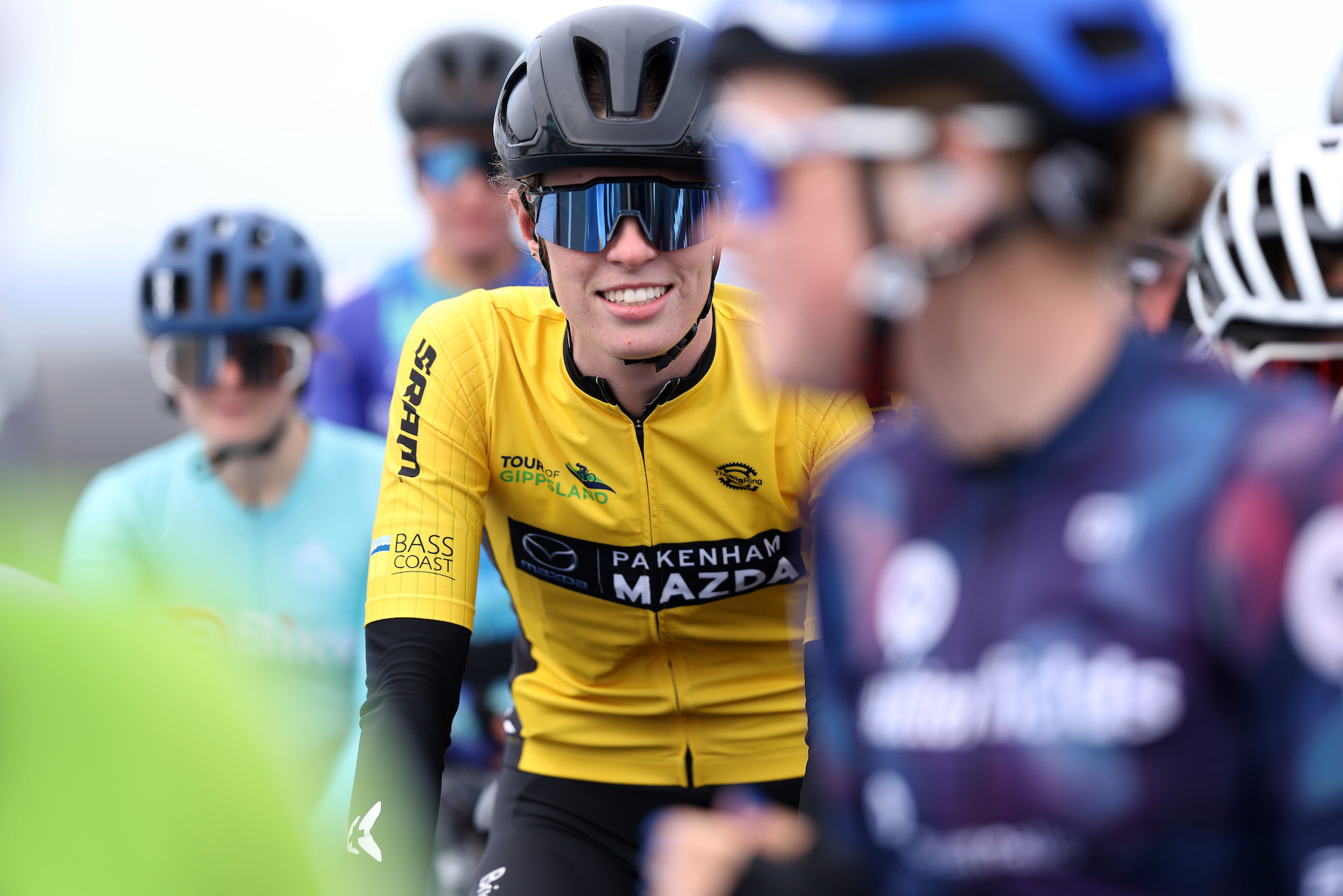
Mackenzie Coupland (Cycling Development Foundation) – At just 18, Coupland proved to be the breakout rider of the women’s NRS this year, highlighted by her big solo win on the Poatina climb at the Tour of Tasmania (where she won overall too).
Scott McGrory says that early in the season it was 46-year-old Ruth Corset who was frequently the strongest climber in the women’s NRS, but that Coupland took up that mantle later in the year.
“She was definitely the best [climber at Tour of Tasmania] and probably would have won Sunny Coast as well, but had her crank fall off in the criterium,” McGrory recalls. “Then she went to Tassie and just blew everyone away.
“She's really young. She's only 18. Often it's more of a difficult step up for the ladies because there's no U23 category for them to gauge their performance development but she's straight up there and doing really well.”
Note that Coupland was also ninth in the U19 women's road race at the Glasgow World Championships in August.
Lucie Fityus (Cycling Development Foundation) – This season 23-year-old Fityus emerged as one of the most exciting sprinters in the competition, taking a handful of podium finishes including two sprint victories at Cycle Sunshine Coast.
Chloe Moran (ARA-Skip Capital) – One of the top sprinters in the NRS, 25-year-old track and road racer Moran won a stage at both Cycle Sunshine Coast and the Tour of Tasmania.
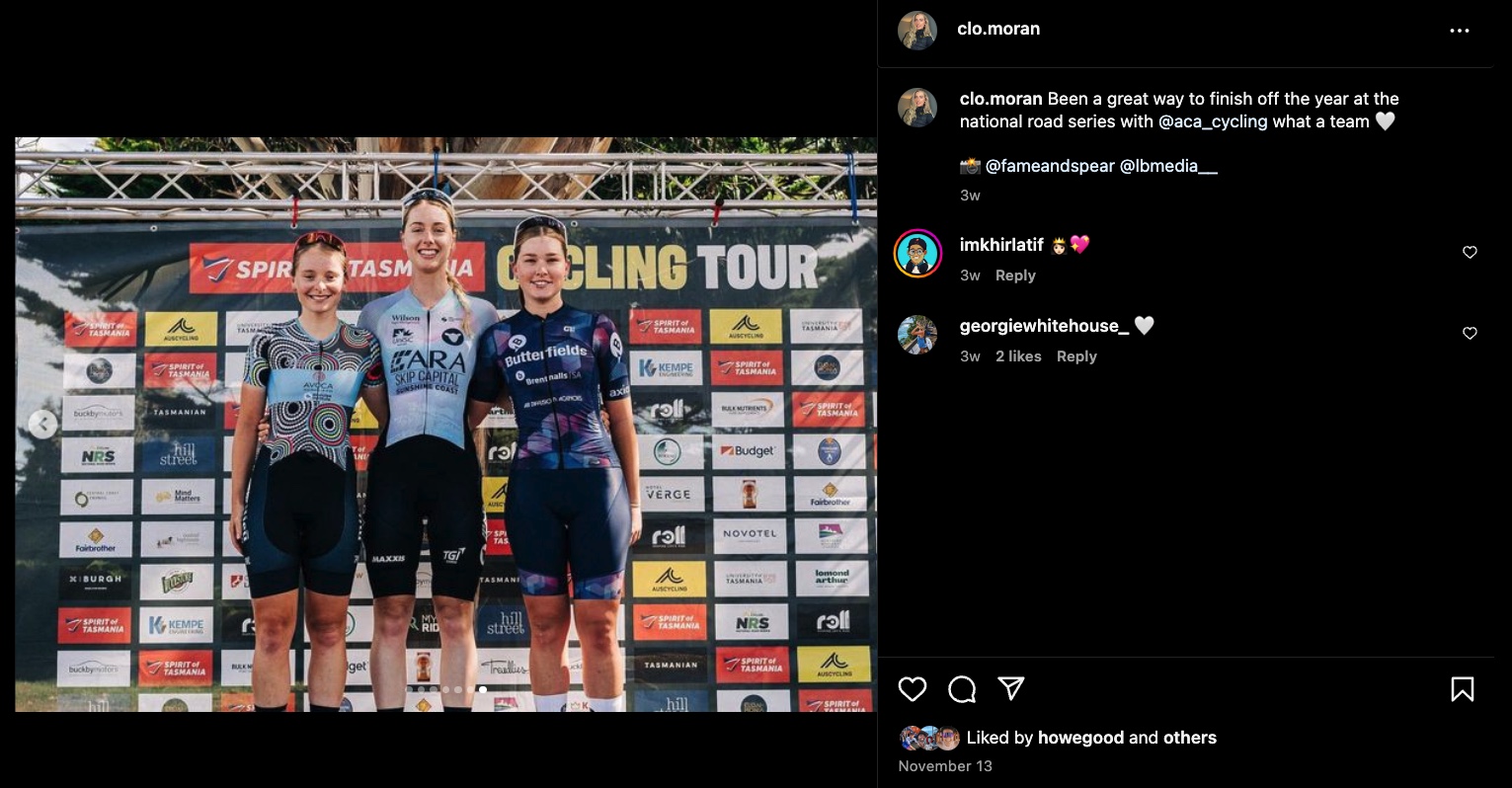
Katelyn Nicholson (Butterfields Racing) – The 23-year-old was second overall at the Tour of Gippsland, third overall at the Tour of Tasmania and Cycle Sunshine Coast, and winner of the time trial at the Tour of Gippsland.

Did BridgeLane’s dominance ruin the series?
On paper, Team BridgeLane utterly dominated the 2023 NRS. In the men’s series, BridgeLane took out the team’s classification with more than three times as many points as its closest rival, it went 1-2-4 in the individual classification, and it won five of the six races for the year. In the one race it didn’t win – the Tour de Brisbane, won by ARA-Skip Capital’s Brady Gilmore – BridgeLane finished 2-3-4.
On the women’s side it was a similar story. BridgeLane won four of the six events on the calendar, it went 1-3 in the individual classification, and it ended up with more than twice as many points in the teams classification as its closest competitor.
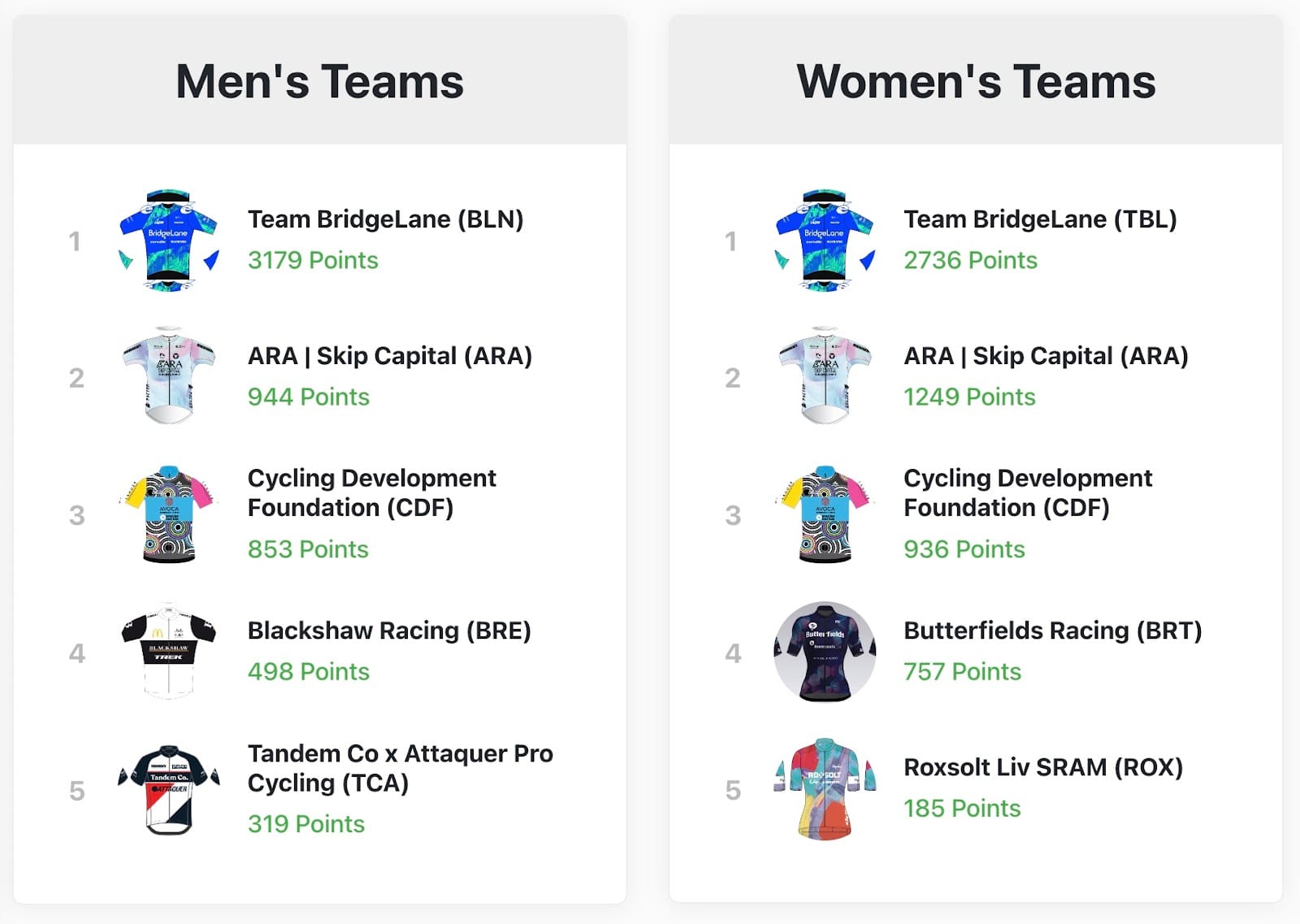
So did BridgeLane dominate as much as these facts suggest? And was that to the series’ detriment?
“Actually not,” McGrory says. “While they would win most of the tours, and they looked truly very dominant when you look at the overall point standings, they didn't clean-sweep any of the events. There was some good racing and very competitive racing, it's just that with the weight of numbers, [and being the] strongest team for sure, especially in the more difficult races …”
McGrory says that the numbers are a little deceptive, especially when it comes to the men’s series.
“They have a very good climber team,” he says. “So ARA-Skip Capital in the men's have a faster type of team, so the easier tours, then ARA, were certainly more competitive. You throw in a little bit with the CCACHE x Par Küp guys every now and then, Blackshaw Racing had some good results early in the season also. So while on paper it does certainly look like BridgeLane completely dominated, it was more competitive than that suggests.”
McGrory mentions the men’s Grafton to Inverell as a specific example. BridgeLane had the numbers in the winning break of three riders, with two of the three, and finished first and third, but they didn’t have the strongest rider on the day: Max Campbell (then Tandem Co Pro Cycling, now CCACHE x Par Küp).
“[Campell] was incredible,” McGrory says. “They were just 1-2, 1-2 attacking him, and in the end, he just went on the front for 15 km just to make sure that that [break] was going to be the race. On the last hill, he dropped Rhys Robotham – didn't attack him, just started riding hard up the hill and Rhys went off the back. And then Zac Marriage just sat on him all the way into town, the last 5 km, and then beat him in the sprint.”
McGrory explained that it was having numbers like this that helped BridgeLane to win the teams classification.
“When you look at the overall points, because it's taken on the first three riders … you might have someone that's really strong as an individual, but his teammates are 10 minutes behind. So the team's not scoring enough points to look as if they're competitive up against BridgeLane, because BridgeLane might have had three or four riders in the first 10.”
Which riders are stepping up in 2024?
The NRS has a long history as one of Australia’s premier pathways to professional road racing. So which riders are making that step up in 2024?
At this stage, just one NRS rider appears to be joining the pro ranks next year. That’s Felicity Wilson-Haffenden (BridgeLane) who has signed with Lidl-Trek on a three-year deal, but that opportunity was the result of her U19 time trial win at the World Championships in Glasgow, not her NRS rides. In fact, Wilson-Haffenden only did two NRS races this year: the Tour de Brisbane (24th) and Grafton to Inverell (16th).
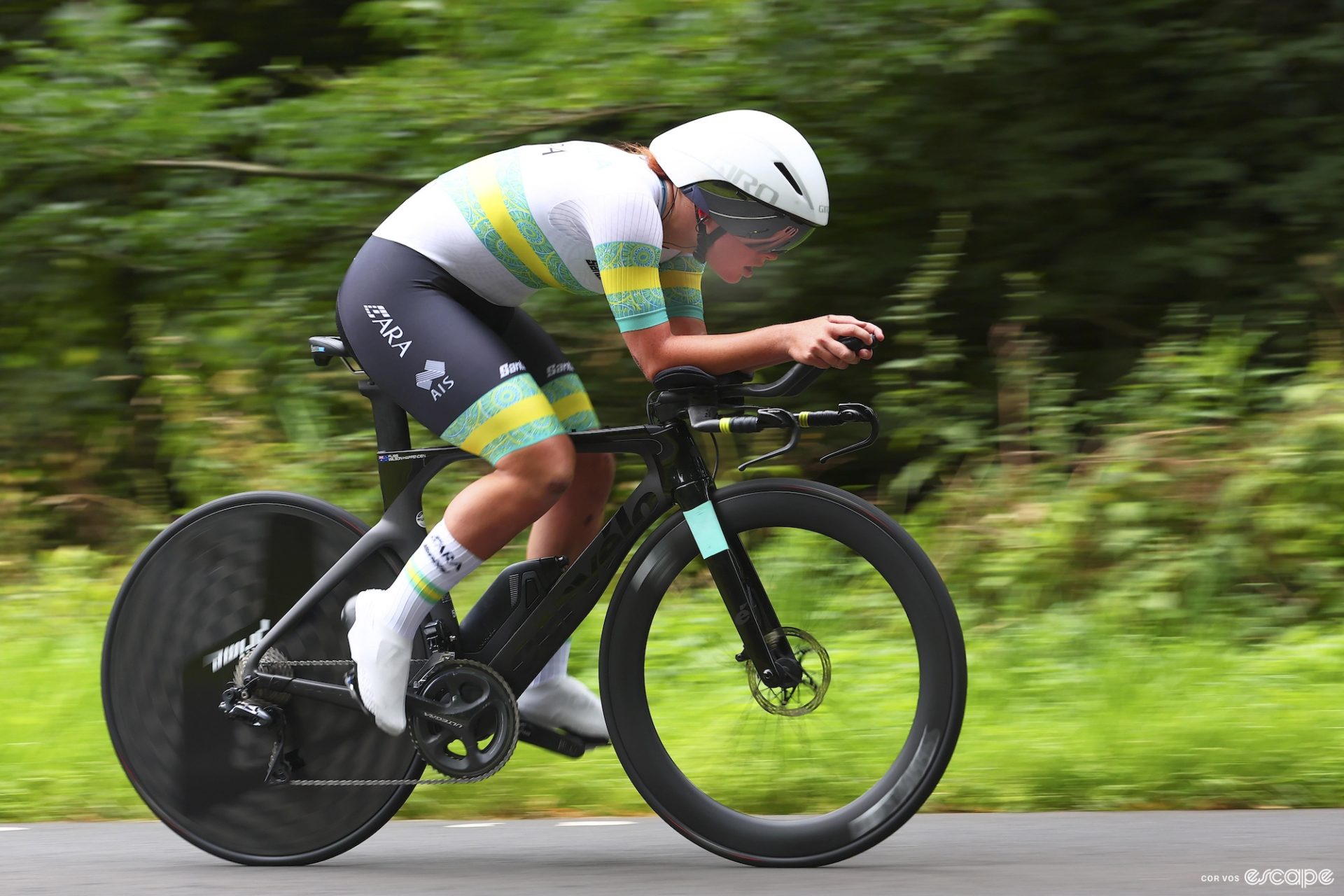
Emily Watts is reportedly set to race overseas in 2024 but it’s not yet clear which team that’s with.
It's worth noting that while most NRS riders are not professional, a handful of NRS teams do have an overseas racing program. BridgeLane did some racing in Europe, for example, and ARA-Skip Capital took part in many Asian races.
How is the NRS going overall?
For years there have been concerns about the health of Australia’s NRS. There aren’t nearly as many races on the calendar as there once were, the races that still exist are becoming harder and harder to run, and the series has long struggled with media coverage and attention. So is it in bad shape?
“It's struggling,” McGrory says. “We can't sugarcoat it. Each of the organisers have their challenges around putting the events on. It's becoming really expensive. Whether it's cost of barriers, cost of workforce – doesn't matter what it is, everything is going to be more expensive. Cost of police is getting more expensive, and we can't have road races and rolling road closures without the cooperation and the work of the police.
“So there's a whole bunch of factors around why it's become more expensive, but that really is hurting the series. It makes it harder for the organisers to come up with the funds and the infrastructure required to have a safe race at the level that we want it."
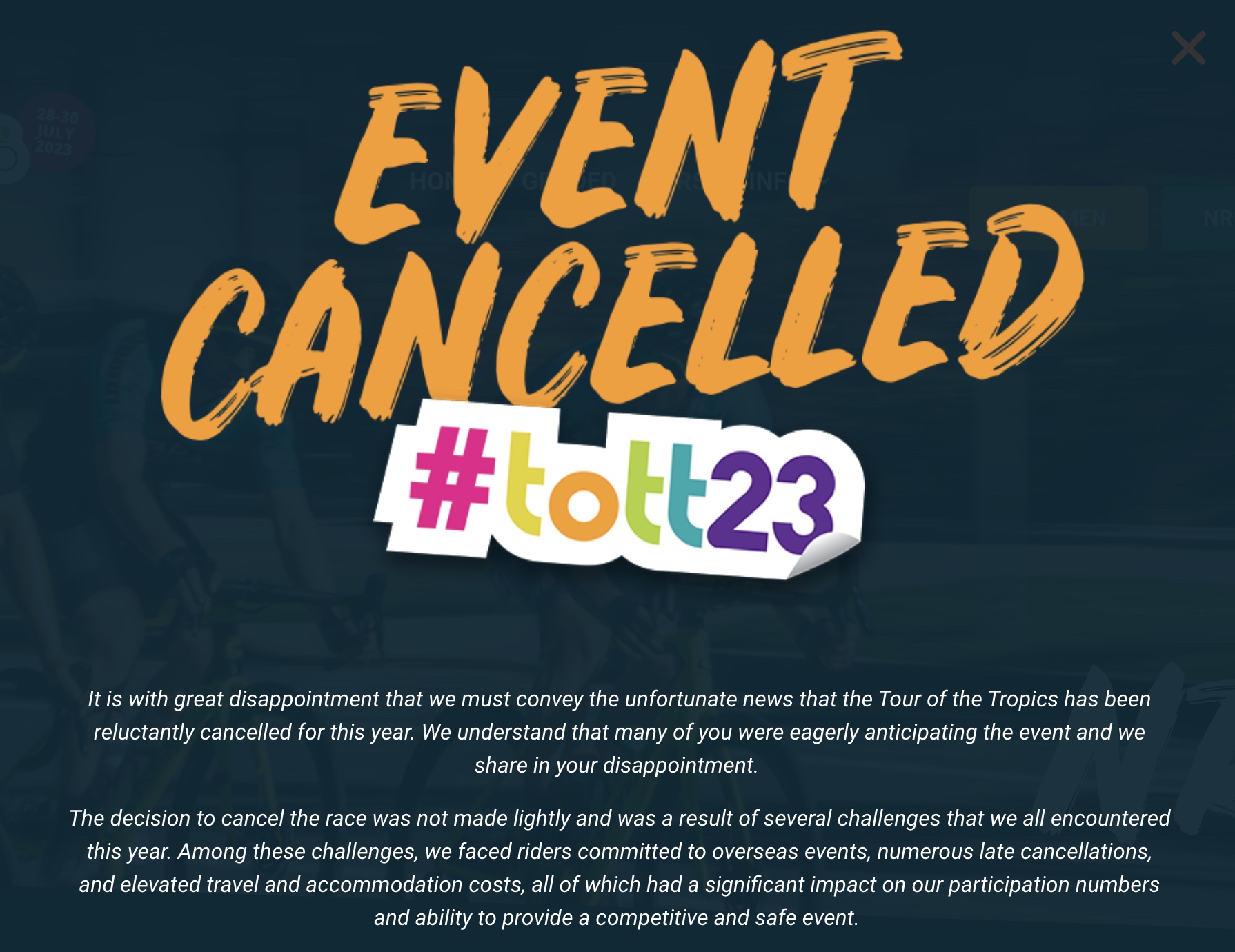
“I don't know exactly what the solutions are but ... it certainly needs some help," McGrory continues. "It's not just cash, but cash is going to be a big factor to help it grow somehow. You know, a major sponsor, major partner. In the end, we are talking about individual race organisers. You look at AusCycling as having this National Road Series, but effectively it is like a franchise – individual clubs or promoters that are putting on these events, which collectively become the National Road Series, but they all need help.”
How is the 2024 NRS shaping up?
The last two NRS seasons each contained six races and the same looks to be true in 2024. After being cancelled this year, the Battle on the Border appears to be gone in 2024 as well, and Cycle Sunshine Coast isn’t happening next year either. The Tour of the Tropics looks set to rejoin the calendar in 2024 though.
Here’s how the full calendar looks (with each event having a men's and women's race):
- February 3-4: Melbourne to Warrnambool
- April 14: Tour de Brisbane
- April 27-28: Grafton to Inverell
- August 16-18: Tour of Gippsland
- September 27-29: Tour of the Tropics
- November 13-17: Tour of Tasmania
How you can help
If you want to help support the NRS and keep it going as a pathway for emerging Australian talent, there is a way you can make a contribution. You can watch the highlights programs on SBS, watch the highlights videos on the AusCycling YouTube channel, read NRS-related content online, and help to share content that others are making about the series.
You can also stay posted to the Down Under Digest newsletter, here on Escape Collective, for ongoing coverage of the NRS.
Did we do a good job with this story?

